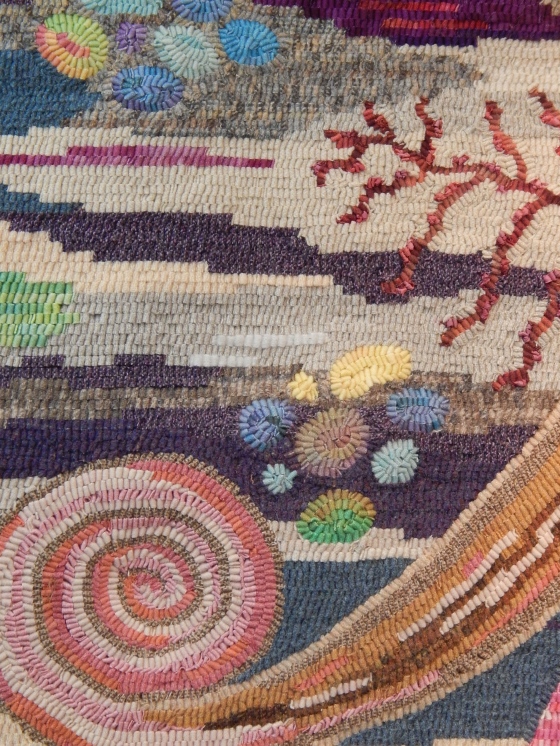Its hard to learn something new, n’est ce pas? This machine has given me a run for my money, but I think I’m on the downhill slope, so I’ll write about it now, when I can write a bit more positively.
First of all, let’s just get this out of the way: the Juki instruction manual STINKS. Everybody knows it. I read about it on the web before I bought it. So when I bought it, I quizzed the dealer and the company reps about who I should call with questions. The dealer (who will remain unnamed,) looked at me like I had sprouted a third head, and then said reluctantly, “oh, call me.” Yeah, I don’t think so. Fortunately the Juki sales rep, who I had talked to at Houston and also at QuiltCon, was more than inviting. Joe gave me his card, and said I could call or email anytime and he would respond within a day. And he has. But I feel like I need to make this clear. I am pretty good at mechanical stuff, and if there are good instructions, I am also good at reading, and figuring out the problem myself. The Juki manual, both online and the brief paper one they included, does not address some of the basic problems I have encountered. INCLUDING an alarming alarm with flashing lights that went off!! Don’t you think that might be worth a mention in their manual? Come on, Juki. You have a great product. You are marketing it to the home quilter. Don’t you think a good manual might save you a little money on reps that are bothered on a daily basis by new customers?
Okay. Now that I’ve got that out of the way… As far as taking it out of the five cartons, and putting it together, Karen Pharr, one of the other reps at Juki, has put two you-tube videos out taking you step by step through the construction of the table and the machine. THANK YOU!! That worked just great.
Oh, and the alarm? I’m still not 100% sure, but I think its just a generic “DANGER, WILL ROBINSON, DANGER.” In other words, “STOP AND CHECK IT OUT. SOMETHING IS NOT WORKING.” The first time it happened was when a thread was tangled in the bobbin holder. And the second time (which closely following the first) was when the needle broke after I put it back together from untangling the thread.
After practicing on my small piece for a few days, and then quilting one very small piece, I really wanted to try quilting on a larger quilt. BTW, for me a larger quilt is 50X60. How (and why) do you people make those giant king sized quilts? Its so unruly to just put together a backing for a quilt THIS size. But I digress. I did put together a larger quilt sandwich, and I just started in quilting. Just a simple repetitive pattern, to get the idea of moving around a larger quilt. Oh, and you can see that I found a small table (my old dog grooming table!) that was just the right size to put next to this machine to support larger quilts.
It went very well, and although its not quite finished, I got enthused and decided to make a second quilt sandwich, since I still had the big ironing topper on my cutting desk, and it was still cleared off. Plus, once you get in the groove of making BIG quilt sandwiches, its not quite so bad, and there’s not nearly as much whining and stamping going on 🙂

Did I tell you that a good friend of mine has started a new ministry at our church, reaching out to the older folks who might not be able to make it to church? I thought it might be nice to have some lap quilts on hand. My friend enthusiastically agreed, so that gives me the motivation to start finishing some of these old tops I have on hand.

Overall, I am loving the way this machine works. I love the sturdiness of the needle, the consistency of the stitches. And I do love the open toed foot that I got. I’m not sure if I would go back to the original foot. I can just see what I’m dong so much better. The machine is easy to thread (there are instructions for that.) And I have almost conquered the “blind placement” of the bobbin (BTW, do you know how wonderful the flashlight on your iPhone is?)
Other features I like: the thread cutter, the needle up/down button, and the baste button. The bobbin winder is on a separate motor, and works very well. Of course, I love the big bobbins. My BF explained to me that the machine gets a little noisier as you near the end of the bobbin. Changing it, and oiling the “hook” at the same time makes everything all better. Thank goodness for my own personal long arm consultant!

































